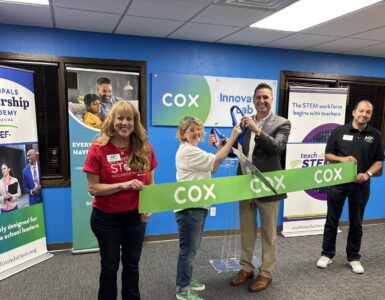The charter school movement in Arizona started 25 years ago and at that time there was a stagnant achievement gap between charter schools and traditional public schools.
This is most likely why people still believe charter schools perform lower than traditional public schools. However, according to Ben DeGrow, director of education policy for the Mackinac Center for Public Policy, a free-market think tank in Michigan, charters nationwide have made progress and closed the gap in recent years.
“[Charter schools] now match other public schools in reading and are only slightly behind in math, despite being more likely to serve students in poverty,” DeGrow wrote in an opinion piece.
The Center for Research on Education Outcomes at Stanford University found that overall 81 percent of charter schools performed equal or better than traditional public schools in reading while 69 percent performed equal or better in math.
“In the 2015 and 2017 National Assessment of Educational Progress exams, Arizona charter students have displayed 8th grade math and reading scores equaling or exceeding the highest performing states. The highest performing states cluster in New England, spend far more per pupil, but fail to beat out Arizona’s majority-minority charter school students,” noted Dr. Matthew Ladner, senior research strategist at the Arizona Chamber Foundation.
“That they still only serve about 6 percent of U.S. public school students may help explain why their impressive gains don’t clearly show in the overall data,” DeGrow added.
“The charter school movement’s greatest success has been the fact that it has closed the achievement gap in many of those districts where you have had a chance to study the program carefully,” Nina Rees, president and CEO of the National Alliance for Public Charter Schools, said. “It has been able to raise overall student achievement, especially among African Americans, Hispanics, special needs students and low-income students… The performance of those subgroups has dramatically improved as a result of attending charter schools.”
In Oct. 2018, Arizona’s public charter school sector lead the state in the percentage of A- and B-rated schools for the second year in a row.
*Source: Arizona Charter Schools Association*
“While letter grades are just one factor for parents to use in deciding which public school is right for their child, we are proud of the hard work of our public charter school leaders, teachers, and students that is reflected in these letter grades,” said Eileen Sigmund, former president and CEO of the Arizona Charter Schools Association.
Public charter school enrollment also increased by 18 percent between the 2017-2018 school year and the 2018-2019 school year, with charter schools serving a majority-minority student population.
According to the Arizona Charter Schools Association, 56 percent of Arizona charter school students identify in a racial and ethnic group other than white.
“It’s no accident that charter school enrollment in Arizona has doubled over the last decade, and today stands at a record high,” Jake Logan, president and CEO of the Arizona Charter Schools Association, said. “Families demand high-quality education options for their children. And for 25 years, Arizona’s public charter schools have delivered.”
AzMERIT results between 2015 and 2018 also showed that public charter school students scored better than the state average in nearly every grade level and subject area and nearly 70 percent of Arizona charter schools that received a letter grade received either an ‘A’ or ‘B’ grade in 2017-2018, according to the Arizona Charter School Association.
“Our movement has demonstrated time and again that it is a better value [education] for low-income students and a better gateway to getting students to and through college,” Rees said. “What Arizona has demonstrated to us is that you can let a thousand flowers bloom and the marketplace can in fact ultimately make good decisions because there are so many charter schools in Arizona, the bad ones have closed and the great ones have remained open and [been] replicated.”

















Add comment